Tired of your dated bathroom but shudder at the thought of a messy, expensive renovation? You’re not alone. Many homeowners dream of a stylish upgrade but are held back by budgets and the hassle of hiring contractors. Peel and stick bathroom tiles are your secret weapon for a stunning 2025 transformation.
The market is flooded with options, making it tough to know which tiles will last and which will peel after the first steamy shower. This guide cuts through the noise. We’ve done the research to bring you a curated list of the best peel and stick bathroom tiles 2025 has to offer, ranked by the factors that matter most.
We will cover everything from waterproofing and durability to budget-friendly ideas and eco-conscious choices. You will learn exactly how long these tiles last, get pro installation tips for a finish that endures, and discover the top trends. Get ready to find the perfect tile for your project.
Why Peel and Stick Tiles Are Perfect for Bathrooms in 2025
Feeling stuck with an outdated bathroom but dreading the cost and chaos of a full renovation? This section shows why modern peel and stick tiles are the smart, stylish solution for a 2025 refresh.
Today’s peel and stick tiles are not the flimsy vinyl squares of the past. Thanks to significant advances in material science and adhesive technology, they have become a go-to for savvy homeowners and renters. They offer a perfect blend of modern aesthetics and practical affordability.

One of their biggest draws is the ability to tap into current design trends without a long-term commitment. Interior design styles evolve quickly. These tiles let you install a trendy terrazzo floor or a classic subway tile backsplash for a fraction of the cost of traditional materials. A full bathroom remodel can cost upwards of $10,000, while a DIY peel and stick makeover might only be a few hundred.
The most critical improvement has been in waterproof peel and stick bathroom tiles. Manufacturers now use robust vinyl composites and aggressive, water-resistant adhesives. This means they can handle the humidity, splashes, and daily use of a busy bathroom environment without warping or failing.
For renters or DIY enthusiasts, the appeal is undeniable. Installation requires no grout, mortar, or specialized saws. You can completely transform a space in a single weekend with minimal tools. For instance, a renter can add a chic backsplash around a pedestal sink, knowing they can remove it without a trace when their lease is up.
How to Choose the Best Peel and Stick Bathroom Tiles
Overwhelmed by all the options and unsure what actually matters for a bathroom? Here, we break down the essential criteria to help you select tiles that look great and perform flawlessly.
Choosing the right tile goes beyond picking a pretty pattern. In a high-moisture environment like a bathroom, performance is just as important as appearance. To make a smart investment, you need to evaluate the material, water resistance, and adhesive strength. Let’s explore the key factors.
Key Factors to Consider
How do you tell a quality tile from one that will peel in a month? We'll cover the non-negotiable factors: material, thickness, and adhesive quality.
Material and Durability
The vast majority of high-quality peel and stick tiles are made from vinyl (PVC). It’s durable, water-resistant, and easy to print with realistic textures. Look for products labeled as Luxury Vinyl Tile (LVT) or Stone Plastic Composite (SPC), as these are thicker and more rigid, offering superior durability for floors.
Tile Thickness
Thickness, measured in millimeters (mm), is a key indicator of quality. Thinner tiles (1-2 mm) are cheaper but can show imperfections from the subfloor and may feel less substantial underfoot. For durable peel and stick tiles for bathroom floors, aim for a thickness of 4mm or more. Think of it like a screen protector for your phone; a thicker one offers much better protection.
Waterproof vs. Water-Resistant
These terms are not interchangeable. Water-resistant tiles can handle occasional splashes, but they may fail with constant exposure. Waterproof tiles are designed to block water completely, making them suitable for bathroom floors and walls outside the direct shower stream. A common misconception is that all peel and stick tiles are shower-safe; most are not. For a deep dive into the difference and to understand what holds up against constant moisture, see our complete analysis of whether peel and stick bathroom tiles are truly durable and waterproof.
Adhesive Quality
The "stick" is what holds everything together. Reputable brands invest heavily in their adhesive formulas. Poor-quality adhesive is the number one reason for peeling corners and failed installations. Always check reviews for comments on how well the tiles adhere over time, especially in humid conditions.
Design and Style
Once you have the technical aspects covered, you can focus on aesthetics. From peel and stick bathroom tiles that look like ceramic to those mimicking marble, wood, or intricate mosaics, the options are vast. For a deeper look at what's in vogue, exploring the top peel & stick tile patterns for 2025 can provide a wealth of inspiration.
Understanding Price Tiers and Your Budget
Can you get a luxury look without the luxury price tag? This part demystifies pricing, helping you find the best value for your budget.
Peel and stick tiles are priced per square foot, and you generally get what you pay for. Understanding the price tiers helps you align your expectations with your budget.
| Price Tier | Cost per Sq. Ft. | Best For |
|---|---|---|
| Budget | $1 - $2.50 | Low-traffic areas like powder room backsplashes or temporary updates. |
| Mid-Range | $2.50 - $5 | The sweet spot for most bathroom floor and wall projects, balancing durability and cost. |
| Premium | $5+ | Luxury vinyl tiles (LVT), rigid core, and unique finishes with the best performance. |
Exploring Eco-Friendly and Sustainable Options
Want a beautiful bathroom that's also kind to the planet? We highlight emerging eco-friendly choices in the peel and stick market.
The demand for sustainable building materials is growing, and the tile industry is responding. While the market is still developing, you can find eco-friendly peel and stick bathroom flooring options if you know what to look for.

Search for tiles made from recycled vinyl or other sustainable materials. Some brands also focus on using low-VOC (Volatile Organic Compound) adhesives, which improves your home's indoor air quality. An eco-friendly tile made from recycled composites is a perfect choice for a small bathroom remodel where style and sustainability can go hand-in-hand.
Top Waterproof Peel and Stick Bathroom Tiles 2025
Ready to see the best of the best for handling moisture? This curated roundup features our top-tested waterproof peel and stick bathroom tiles for 2025.
We’ve analyzed the market for durability, water resistance, and design to bring you the top performers. These tiles are built to withstand the unique challenges of a bathroom environment, giving you confidence in your choice.

Best Overall: The "AquaDefense" Max Vinyl Tile
This tile is a true workhorse, earning its spot as the best overall pick. It features a thick, commercial-grade vinyl composition (around 5mm) and an advanced waterproof adhesive. Its micro-beveled edges create tight seams, offering superior protection against moisture.
- Pros: Extremely durable, fully waterproof, realistic stone and wood textures, easy to clean.
- Cons: Higher price point, requires a very smooth subfloor for best results.
- Best For: High-traffic family bathrooms and anyone prioritizing longevity.
Best for Floors: The "StoneGrip" Rigid Core Tile
When it comes to durable peel and stick tiles for bathroom floors, a rigid core is a game-changer. These tiles click together at the edges before the adhesive backing is secured, creating a semi-floating floor that’s exceptionally stable. The textured surface also provides better slip resistance.
- Pros: Resists indentation, hides minor subfloor imperfections, excellent stability, textured for safety.
- Cons: Installation is slightly more involved than standard tiles, limited pattern options.
- Best For: Bathroom floors that see heavy use or are being laid over slightly uneven surfaces.
Best for Walls & Backsplashes: The "Artisan" 3D Gel Tile
If you want the convincing look of glazed ceramic, these are for you. Made with a gel-like component over the printed layer, these tiles have a three-dimensional depth and shine that’s incredibly convincing. They are lightweight and easy to cut, making them ideal for vertical surfaces.
- Pros: Looks remarkably like real tile, very easy to cut and install, resistant to splashes and humidity.
- Cons: Not suitable for floors or inside a shower, can be scratched by abrasive cleaners.
- Best For: Creating a stunning, high-impact backsplash or feature wall. For more wall-specific options, the go-to resource is our review of the Best Peel and Stick Wall Tiles 2025.
Which Peel and Stick Tile Is Right for You?
Answer one question to find your perfect match.
What is your main priority for your bathroom project?
Pros and Cons of Peel and Stick Tiles in Bathrooms
Wondering if peel and stick is truly the right choice for you? This section provides a balanced, honest look at the benefits and potential drawbacks.
While modern peel and stick tiles are a fantastic solution for many, it's important to have a realistic view of their capabilities. Understanding both the advantages and the limitations will help you decide if they are the right fit for your bathroom project.
The Advantages: Why DIYers Love Them
What makes these tiles so appealing for a weekend project? Let's unpack the top three benefits: cost, speed, and style.
The primary benefit is affordability. You save on both the material and the labor, which often accounts for over half the cost of a traditional tile job. A DIY installation can save you thousands of dollars.
Next is the ease of installation. There’s no need for messy mortar, complicated wet saws, or dusty grout. Most projects can be completed in a weekend using just a utility knife and a straightedge. This accessibility empowers homeowners to achieve professional-looking results on their own.
Finally, design flexibility is a huge plus. Are you hesitant to commit to a bold pattern that might feel dated in five years? With peel and stick, you can embrace the latest trends without worry. Swapping out tiles for a fresh look is a simple and low-cost project.
The Disadvantages: What to Watch Out For
What are the hidden pitfalls you need to know about before you buy? We'll cover the critical considerations of moisture, longevity, and perceived value.
The main concern is moisture resistance. While many tiles are waterproof, their weak point is the seams. If not installed correctly on a perfectly smooth surface, water can seep between the tiles and compromise the adhesive. For high-moisture zones, consulting a guide on waterproof peel and stick shower tiles is essential to ensure you choose a product truly designed for wet areas. Furthermore, understanding the nuances of peel and stick bathroom tile for moisture can make the difference between a project that lasts for years and one that fails prematurely.
You must also set realistic expectations for longevity. A well-installed, high-quality peel and stick floor can last 5-10 years, but it won’t match the 20+ year lifespan of porcelain. For example, one case study in a small apartment bathroom showed quality vinyl tiles looking great after four years of daily use, which is a fantastic return on investment.
A final consideration is the subfloor. Peel and stick tiles are flexible and will "telegraph" any bumps, grout lines, or imperfections from the surface beneath. It’s a common misconception that you can stick them on any surface without prep; a smooth, clean foundation is critical for a good result.
Hear From Our Customers
"I transformed my guest bathroom in one afternoon! The tiles were so easy to cut and install, and they look just like real ceramic. I'm blown away by the quality."
- Sarah K., DIY Homeowner
"As a renter, I thought I was stuck with my ugly bathroom floor. These tiles were the perfect solution. They feel durable underfoot and I know I can remove them when I leave."
- Mark T., Renter
Installation and Maintenance Tips for Long-Lasting Results
You've chosen your tiles—now how do you make sure they last? Follow these expert installation and care tips to protect your investment and enjoy a flawless finish for years.
A successful peel and stick tile project is all about proper technique. The right preparation and ongoing care will double the life of your new floor or wall and keep it looking pristine.

The Foundation: Surface Prep and Installation
Think you can just peel and stick without any prep work? Proper preparation is 90% of the job. Here's how to do it right.
Prep is everything. The surface must be perfectly clean, completely dry, and as smooth as possible. Think of it like painting a wall; the final result is only as good as the prep work. For a complete walkthrough, the definitive resource is our guide on how to transform your bathroom with peel and stick tiles.
Start by thoroughly cleaning the existing floor or wall with a degreasing cleaner to remove any soap scum or residue. If you’re installing over old ceramic tile, you may need to fill in the grout lines with a skim coat of floor patch to create a flat surface.
Before peeling any backing, do a "dry fit" to plan your layout. Find the center of the room and draw perpendicular guidelines. This ensures your pattern is straight and centered. When you’re ready, peel the backing and press the tile firmly into place, working from the center outwards. A J-roller is a pro-level tool that helps ensure firm, even pressure for maximum adhesion.
Keeping Them Clean: The Do's and Don'ts
How do you clean these tiles without damaging the surface or the adhesive? This simple maintenance routine will keep your tiles looking brand new.
The key to cleaning is to be gentle. Use a soft-bristle broom or vacuum for loose dirt. For deeper cleaning, use a damp mop with a pH-neutral cleaner. A common mistake is using harsh chemicals like bleach or ammonia, which can dull the finish and weaken the adhesive.
Always wipe up spills and standing water promptly. While the tiles themselves are waterproof, you want to prevent water from sitting on the seams for extended periods. For more detailed advice, our Peel and Stick Tile Maintenance Guide 2025 offers a comprehensive list of dos and don'ts.
When to Replace or Refresh
How do you know when it's time for a change? Recognize the signs of wear and learn how to easily replace a single damaged tile.
Look for signs of wear like corners that have begun to lift, deep scratches that won't buff out, or discoloration from sun exposure. One of the best features of these tiles is the ability to do spot repairs.
To replace a single damaged tile, gently heat it with a hairdryer or heat gun to soften the adhesive. Use a putty knife to carefully pry it up. Clean the exposed subfloor, then simply press a new tile into place. It’s a great pro-tip to always buy one extra box of tiles for future repairs.
Your Stylish Bathroom Awaits
The right peel and stick tiles can completely change your bathroom, offering a powerful combination of style, affordability, and DIY satisfaction. Modern waterproof peel and stick bathroom tiles have proven they can stand up to the demands of a high-humidity space, making them a brilliant choice for your 2025 project.
Whether you need a super-durable floor for a busy family, a removable option for a rental, or a high-end look on a budget, there is a perfect tile out there for you. With proper installation and care, your new bathroom surface will look fantastic for years to come.
Ready to take the next step? Explore our guides on how to use peel and stick tiles in 2025 to get inspired for your project.
Compare today’s best peel and stick bathroom tiles now.Frequently Asked Questions (FAQ)
1. How long do peel and stick tiles last in a bathroom?
With proper installation on a well-prepped surface, high-quality peel and stick tiles can last anywhere from 5 to 10 years in a bathroom. Longevity depends on the quality of the tile, the amount of foot traffic, and how well it's maintained. Budget-tier tiles in a high-traffic area may show wear sooner.
2. Are peel and stick tiles really waterproof enough for a bathroom?
Yes, many are. Look for tiles specifically marketed as "waterproof," not just "water-resistant." These are made from vinyl and have strong adhesives designed for humid environments. While they are great for floors and walls, most are not recommended for use inside a shower enclosure where they face constant, direct water pressure.
3. Can I put peel and stick tiles directly over my old ceramic tiles?
You can, but preparation is critical. The main challenge is grout lines, which will show through the new tiles. To prevent this, you must first apply a thin layer of a floor leveling compound to fill the grout lines and create a single, smooth surface. The surface must be perfectly flat for the new tiles to adhere properly.
4. What's the best way to remove peel and stick tiles without damaging the floor?
For removable or renter-friendly tiles, the process is straightforward. Gently warm the tile with a hairdryer to soften the adhesive. Then, use a plastic putty knife to slowly lift a corner and peel the tile back at a low angle. Any sticky residue can usually be cleaned with a citrus-based cleaner or mineral spirits.
5. Do peel and stick bathroom tiles look cheap?
Not anymore! A common myth is that they all have a cheap, plastic look. Premium and mid-range tiles now feature high-definition printing, realistic textures (like wood grain or stone), and 3D gel finishes that convincingly mimic ceramic, stone, and even cement. When installed correctly, they can look surprisingly high-end.

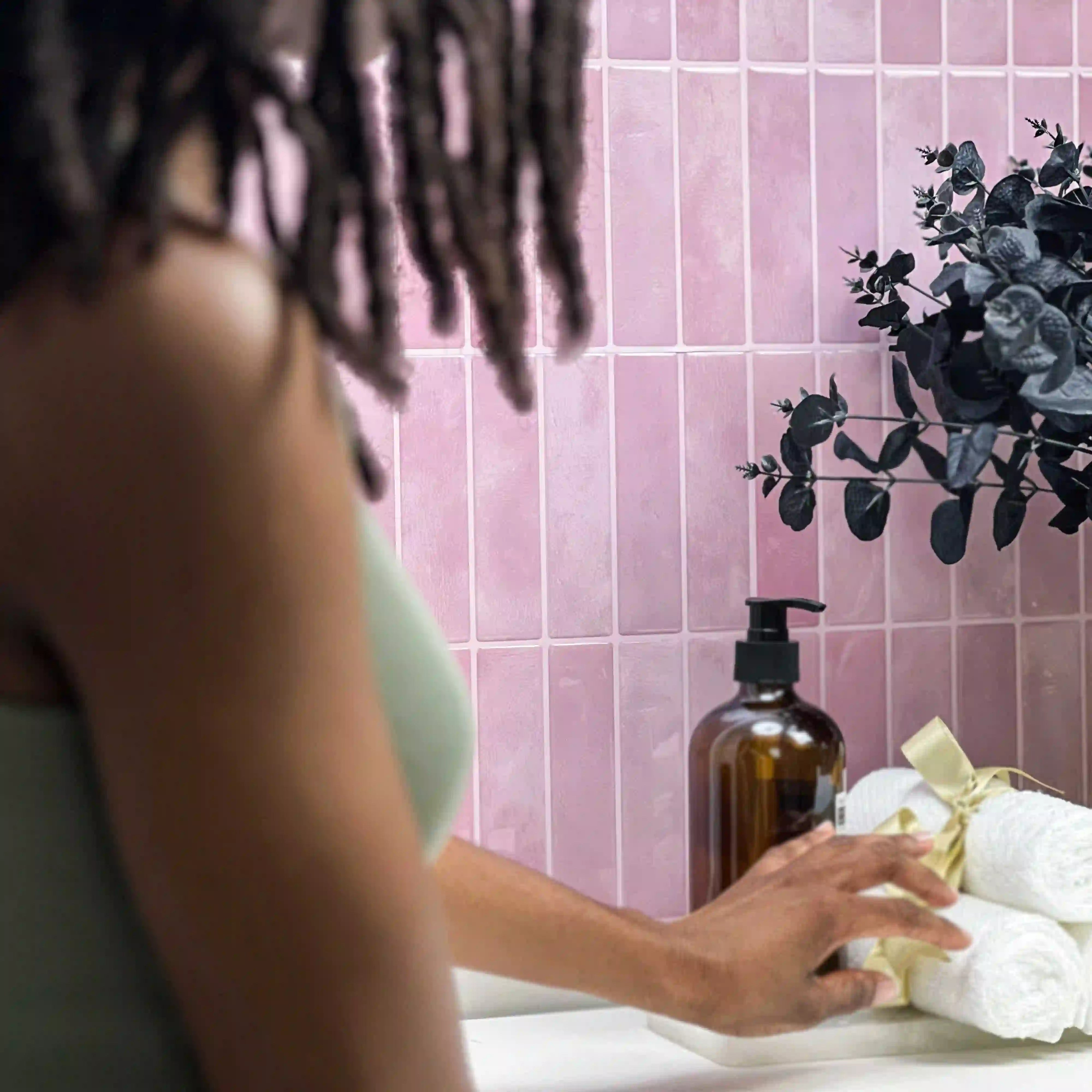
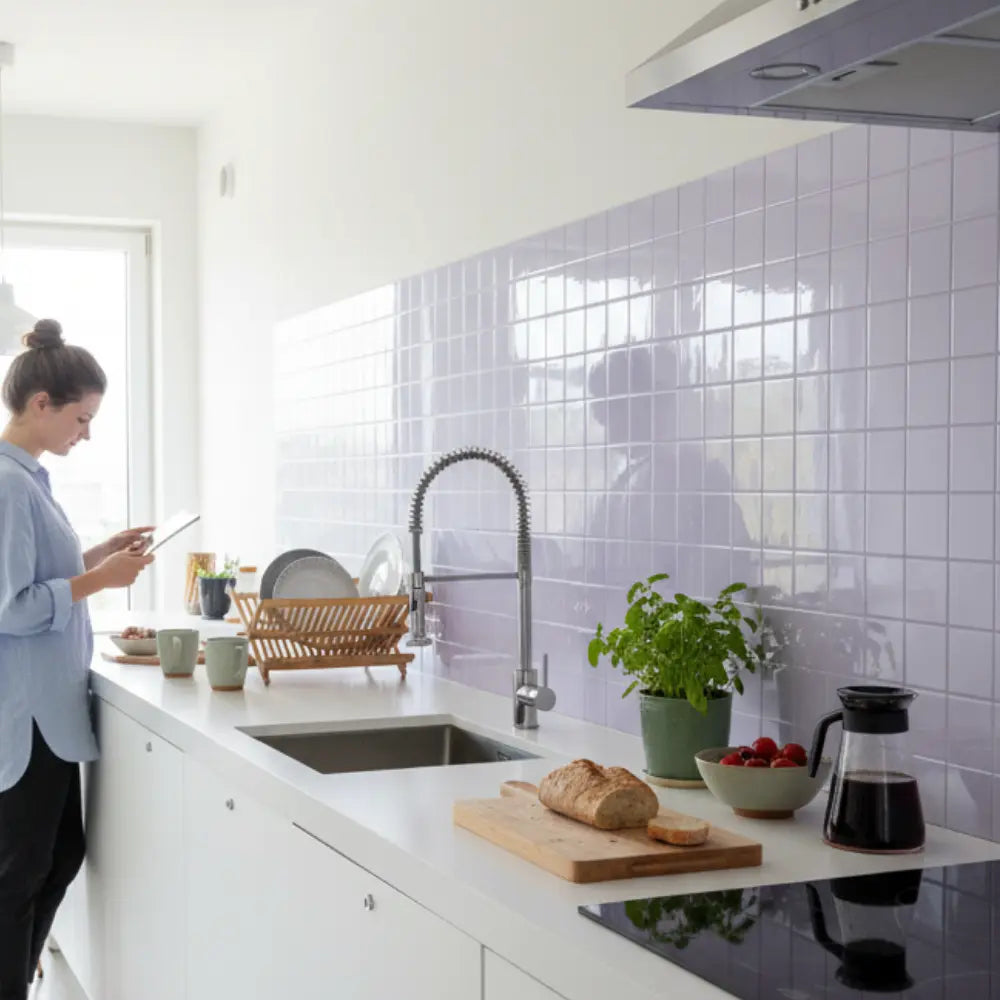
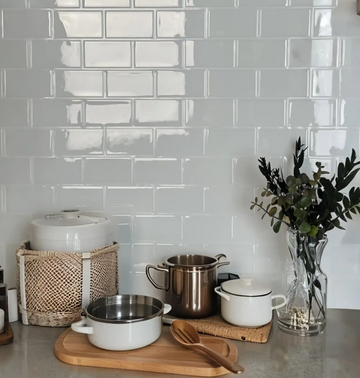
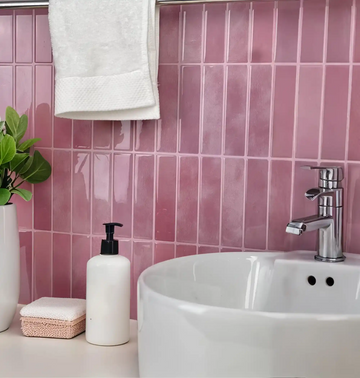
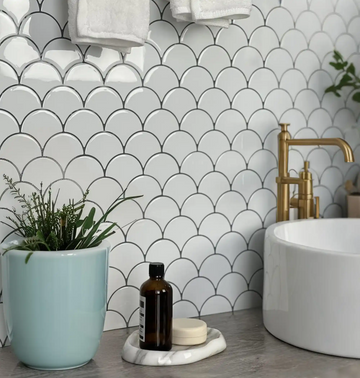
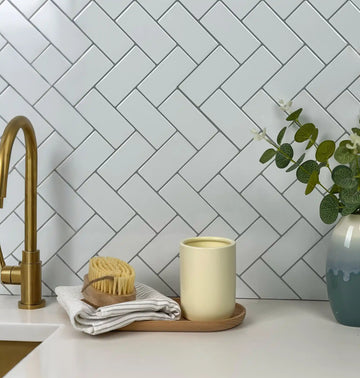
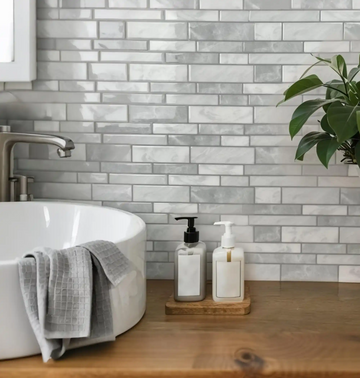
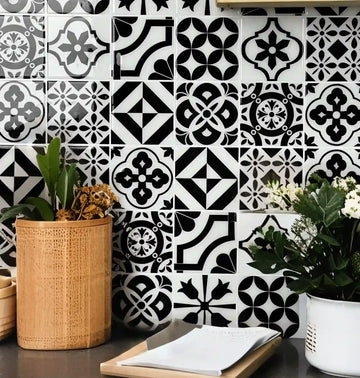
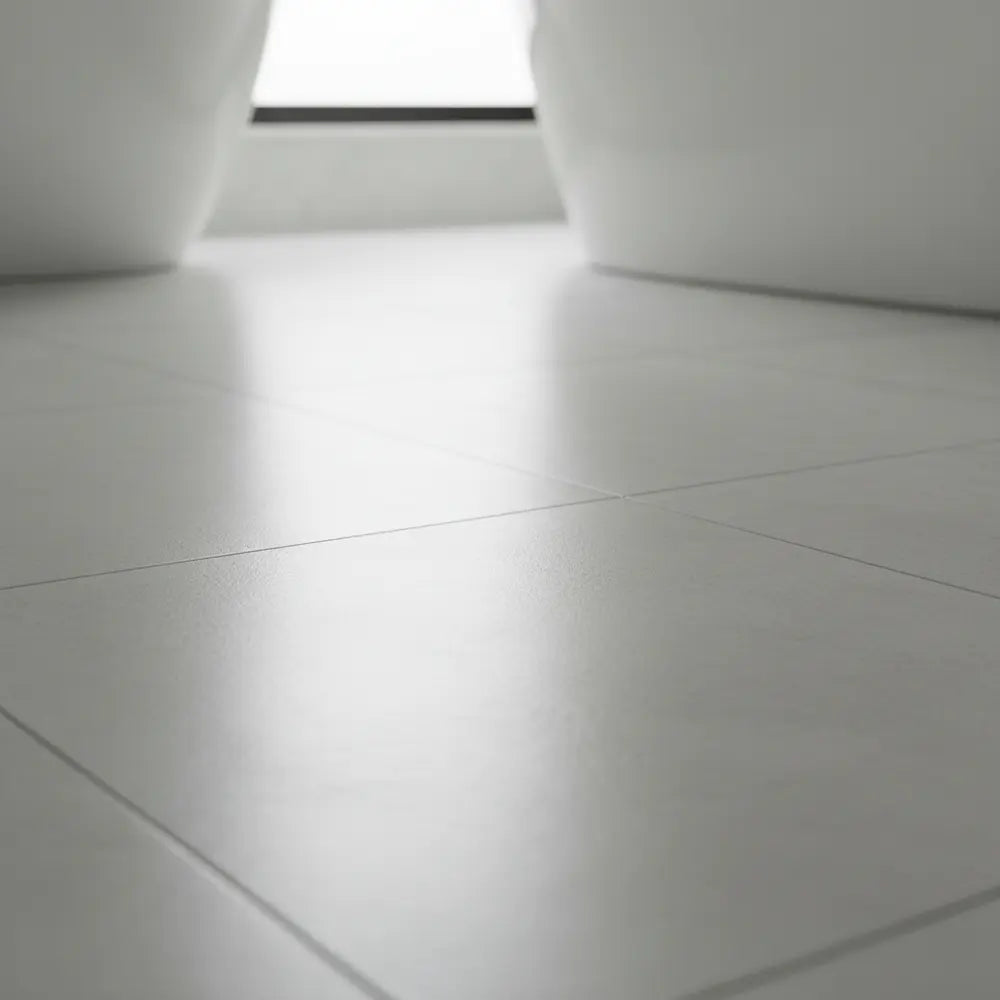
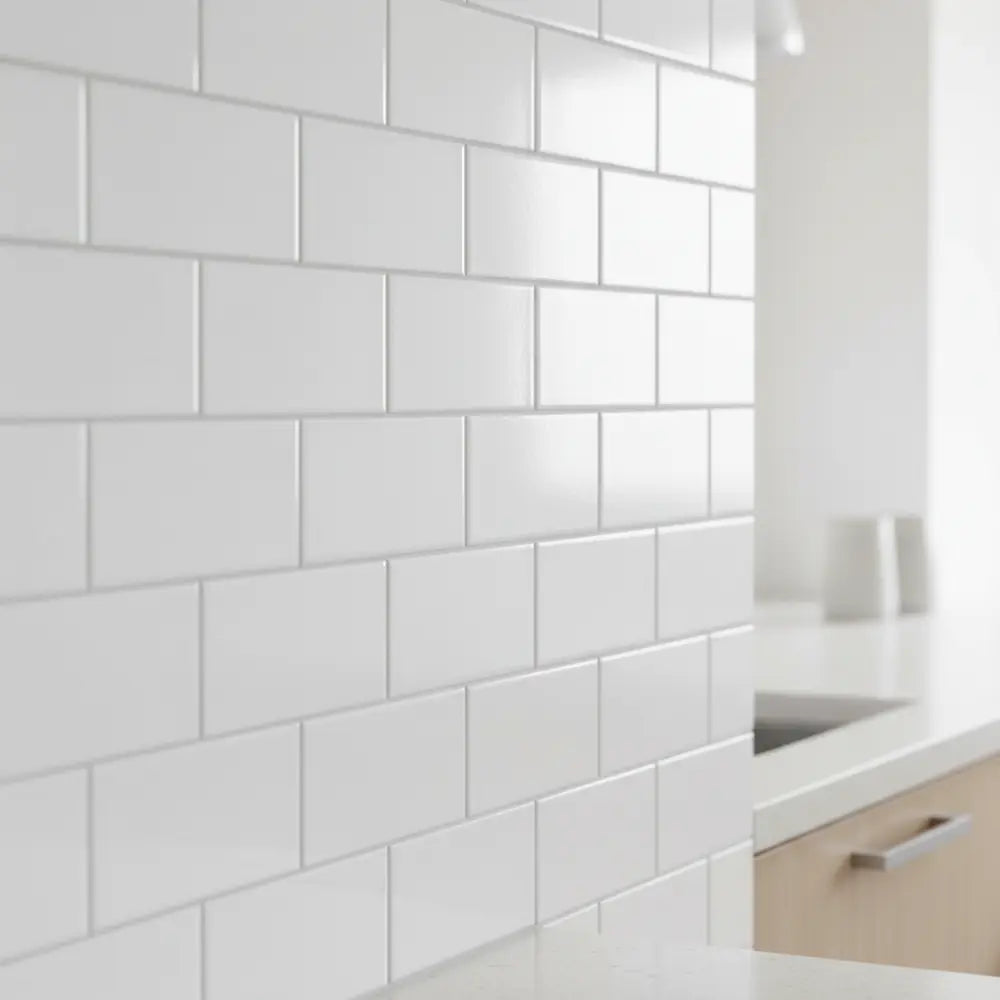
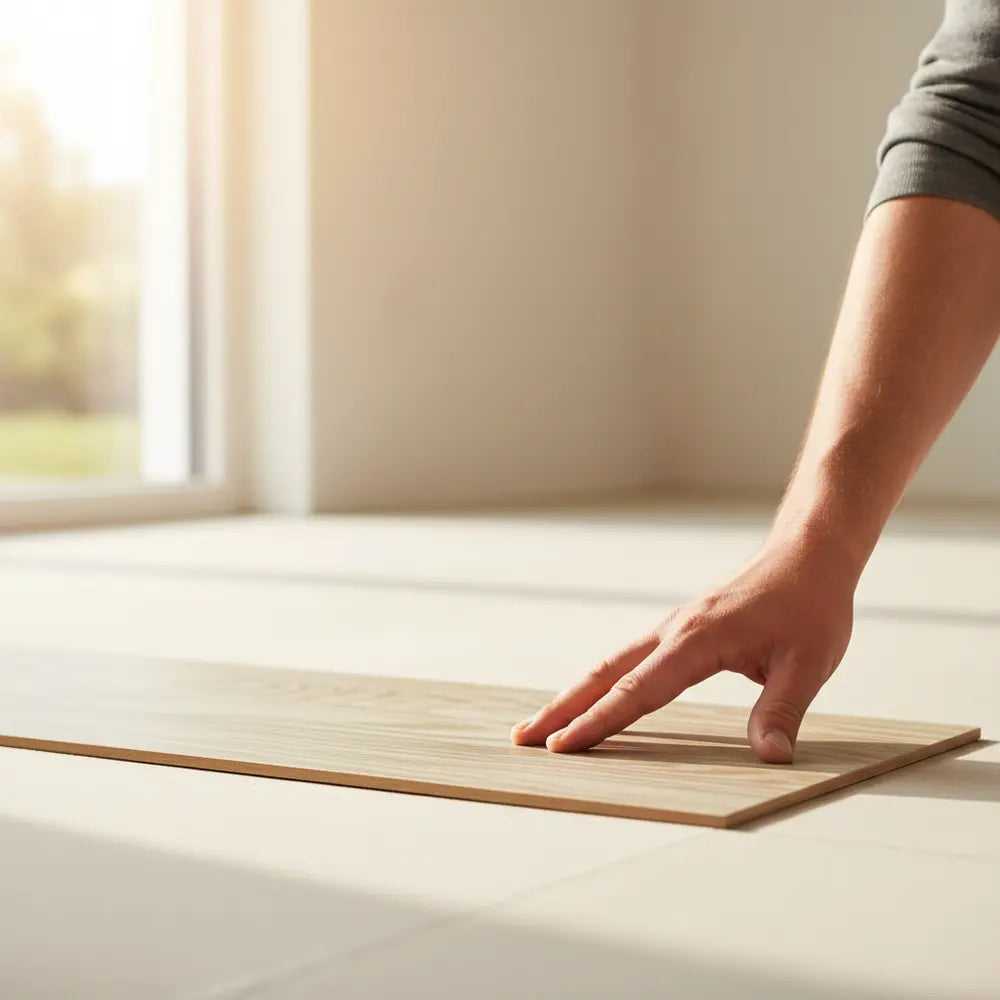
Leave a comment
This site is protected by hCaptcha and the hCaptcha Privacy Policy and Terms of Service apply.